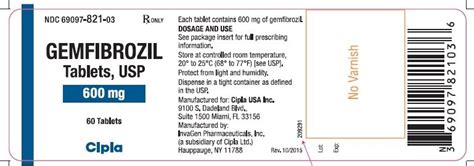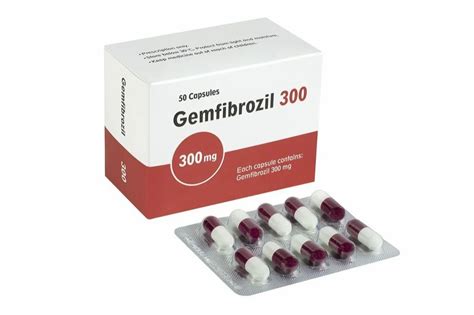Intro
Discover Gemfibrozil 600mg Tablet Uses, a fibric acid derivative for lowering cholesterol and triglycerides, managing hyperlipidemia, and reducing cardiovascular risk, with benefits for lipid profiles and heart health.
Gemfibrozil is a medication that has been widely used in the management of high cholesterol and triglyceride levels in the blood. It belongs to a class of drugs known as fibric acid derivatives or fibrates. The primary use of Gemfibrozil 600mg tablets is to reduce the risk of heart disease by lowering the levels of "bad" cholesterol (low-density lipoprotein, LDL) and triglycerides, while also increasing the levels of "good" cholesterol (high-density lipoprotein, HDL) in the blood.
The importance of managing cholesterol levels cannot be overstated. High levels of cholesterol can lead to the buildup of plaque in the arteries, a condition known as atherosclerosis, which can result in heart attacks, strokes, and other cardiovascular diseases. By controlling cholesterol levels, individuals can significantly reduce their risk of developing these conditions. Gemfibrozil 600mg tablets are typically prescribed for patients with very high triglyceride levels or for those who have not responded adequately to other cholesterol-lowering treatments.
Gemfibrozil works by activating a protein called peroxisome proliferator-activated receptor alpha (PPAR-alpha), which helps in regulating the genes involved in lipid metabolism. This activation leads to increased lipolysis (breakdown of fats) and clearance of triglyceride-rich particles from the bloodstream, thereby reducing the overall triglyceride levels. Additionally, Gemfibrozil increases the production of HDL cholesterol, which is beneficial for removing excess cholesterol from the bloodstream and transporting it to the liver for excretion.
Benefits of Gemfibrozil 600mg Tablets

The benefits of using Gemfibrozil 600mg tablets are multifaceted. Firstly, they are effective in managing hypertriglyceridemia (high levels of triglycerides in the blood), which is a significant risk factor for pancreatitis (inflammation of the pancreas) and cardiovascular disease. Secondly, by increasing HDL cholesterol levels, Gemfibrozil helps in enhancing the removal of excess cholesterol from the arterial walls, thereby reducing the risk of atherosclerosis. Furthermore, the use of Gemfibrozil has been associated with a reduced risk of major cardiovascular events such as heart attacks and strokes in patients with high cardiovascular risk.
Key Mechanisms of Action
The mechanisms through which Gemfibrozil exerts its beneficial effects on lipid profiles and cardiovascular health are complex and involve several pathways: - **Increased Lipolysis**: Gemfibrozil enhances the breakdown of triglycerides in the bloodstream, leading to a reduction in triglyceride levels. - **Enhanced Clearance of Triglyceride-Rich Particles**: It increases the clearance of very-low-density lipoproteins (VLDL) and chylomicrons, which are rich in triglycerides, from the bloodstream. - **Increased Production of HDL**: By stimulating the production of apolipoprotein A-I and apolipoprotein A-II, Gemfibrozil increases the levels of HDL cholesterol, which plays a crucial role in reverse cholesterol transport.Administration and Dosage

The administration and dosage of Gemfibrozil 600mg tablets are critical for their effective use. The typical dosage is one 600mg tablet taken twice daily, 30 minutes before the morning and evening meals. It is essential to take the medication as prescribed by the healthcare provider and to maintain a consistent dosing schedule to achieve optimal therapeutic effects. Additionally, patients should be advised to adhere to a lipid-lowering diet and, if applicable, to continue other treatments for high cholesterol as directed by their healthcare provider.
Precautions and Side Effects
While Gemfibrozil 600mg tablets are generally well-tolerated, there are precautions and potential side effects that patients should be aware of: - **Liver Damage**: Gemfibrozil can cause liver damage. Monitoring of liver function tests is recommended. - **Muscle Pain**: There is a risk of muscle pain, tenderness, or weakness, which can be a sign of a more serious muscle condition. - **Gallstones**: Gemfibrozil may increase the risk of developing gallstones. - **Increased Risk of Gallbladder Disease**: Patients should be monitored for signs of gallbladder disease.Interactions with Other Medications

Gemfibrozil can interact with other medications, either by enhancing their effects or by increasing the risk of side effects. It is crucial for patients to inform their healthcare providers about all the medications they are currently taking, including prescription drugs, over-the-counter medications, vitamins, and herbal supplements. Notable interactions include:
- Warfarin: Gemfibrozil can increase the anticoagulant effect of warfarin, leading to an increased risk of bleeding.
- Statins: The combination of Gemfibrozil with statins (e.g., simvastatin, atorvastatin) can increase the risk of muscle damage.
- Repaglinide: Gemfibrozil can increase the levels of repaglinide, a medication used to lower blood sugar, potentially leading to hypoglycemia.
Monitoring and Follow-Up
Regular monitoring and follow-up are essential components of the treatment plan for patients taking Gemfibrozil 600mg tablets. This includes: - **Lipid Profiles**: Regular checks of cholesterol and triglyceride levels to assess the effectiveness of the treatment. - **Liver Function Tests**: Monitoring for signs of liver damage. - **Muscle Enzymes**: Checking for elevated levels of muscle enzymes, which can indicate muscle damage.Conclusion and Future Directions

In conclusion, Gemfibrozil 600mg tablets offer a valuable treatment option for managing high cholesterol and triglyceride levels, thereby reducing the risk of cardiovascular disease. However, their use must be carefully considered, taking into account potential side effects, interactions with other medications, and the need for regular monitoring. As research continues to evolve, future directions may include the development of new fibrates with improved safety profiles or the identification of novel therapeutic targets for the management of dyslipidemia.
Final Thoughts
The management of high cholesterol and triglyceride levels is a multifaceted approach that involves lifestyle modifications, dietary changes, and, when necessary, pharmacological interventions like Gemfibrozil. By understanding the benefits, mechanisms of action, and potential risks associated with Gemfibrozil 600mg tablets, healthcare providers and patients can work together to make informed decisions about their use, ultimately aiming to reduce the burden of cardiovascular disease.What is Gemfibrozil used for?
+Gemfibrozil is used to lower triglyceride levels and increase HDL (good) cholesterol in the blood.
How does Gemfibrozil work?
+Gemfibrozil works by activating a protein that helps regulate lipid metabolism, leading to increased breakdown and clearance of triglycerides from the bloodstream.
What are the common side effects of Gemfibrozil?
+Common side effects include liver damage, muscle pain, and an increased risk of gallstones and gallbladder disease.
We invite readers to share their thoughts and experiences with Gemfibrozil 600mg tablets in the comments below. If you found this article informative, please consider sharing it with others who might benefit from this information. Together, we can work towards a better understanding of cholesterol management and cardiovascular health.
